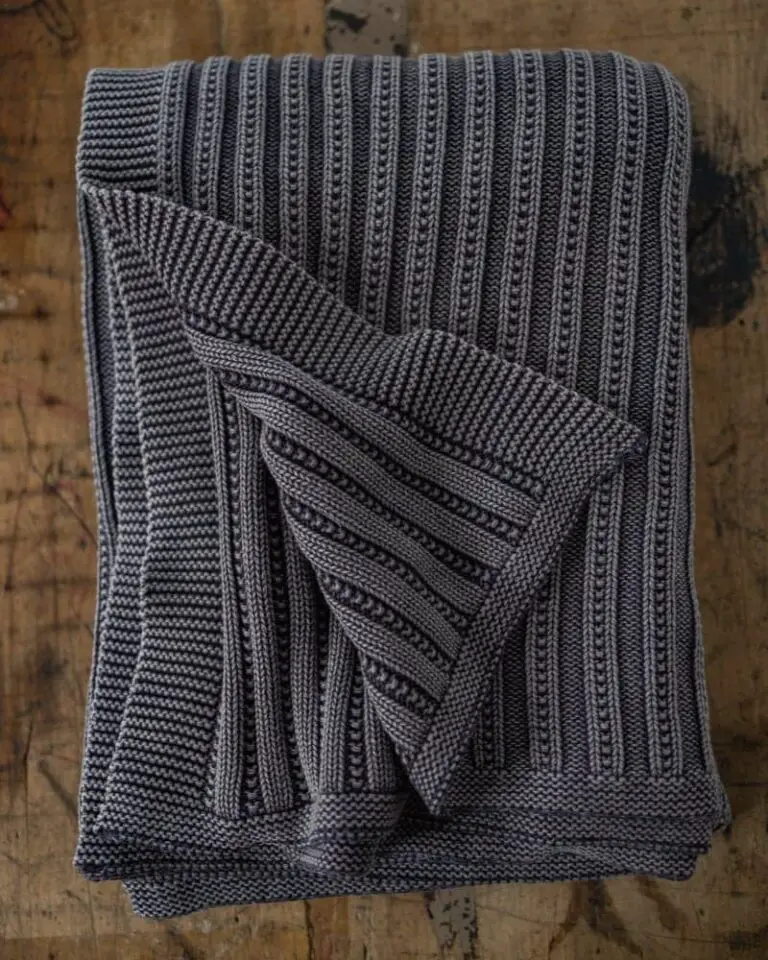28+ Different Types Of Axes, Axe Heads And Their Uses (With Photos)
The humble axe, an ancient tool familiar to us all, is often misunderstood as a one-size-fits-all solution for splitting wood and other tasks. In reality, there are nearly 20 distinct types of axes, each with its unique head pattern and function. From the rugged outdoorsman to the urban warrior, the right axe can make all the difference.
In this post, we’ll delve into the world of axes, exploring various types and their characteristics, as well as shedding light on some common misconceptions about these versatile tools.
Axe head patterns
When selecting an axe, the head pattern plays a crucial role in determining its intended use and swing dynamics. It’s not just about the type of chopping or splitting you’ll be doing, but also affects the overall weight distribution between the head and handle. Here are the most common axe head patterns found in modern axes.
Rafting
The origins of this distinctive axe head pattern date back to the early days when logs were floated down rivers to be collected by waiting cargo trucks at the end of the stream. Characterized by a forged, flat head mounted perpendicularly on a long handle, this design has remained largely unchanged since its inception in the 1920s.
Kentucky
The versatility of screwdrivers is reflected in their varying designs, with options available in both single-bit and double-bit styles. Double-bit models stand out for their unique combination of a flat blade on one side and a hammer on the other.
Connecticut
The classic wedge head design, characterized by its subtle flare at the base, excels when it comes to handling everyday chopping tasks. This versatility makes it an excellent choice for cooks who rely on a reliable blade for most of their prep work.
Michigan
When it comes to selecting the right head pattern for your axe, understanding the unique characteristics of each design is crucial. The curved head, commonly found on felling axes, is particularly well-suited for tackling large trees and dense woods. This curvature allows for a more aggressive strike angle, making quick work of even the toughest logging tasks.
Types of axes for work
While it’s true that various categories of axes exist, one type stands out as particularly crucial to our purposes here. The versatility of an axe is often taken for granted, but the reality is that different activities require distinct tools, and not all axes are created equal. When it comes to choosing the right axe for your needs, personal preferences play a significant role, as do the specific tasks at hand.
This diversity in options means you can select the perfect tool for your work, ensuring optimal results.
Adze axe
Dating back to prehistoric times, this compact axe is a relic from the stone age era. Its diminutive size belies its rugged functionality, with a steel cutting edge designed for portability and ease of use. The blade’s perpendicular alignment to the handle allows for versatility in application, available in both short and long versions catering to diverse needs. A suitable choice for tasks such as wood carving, general woodworking, and landscaping projects.
Broad Axe

When it comes to broad axes, there are two primary types: single-beveled and double-beveled models. The former is designed specifically for hewing flat planes on wood, making it an essential tool for any woodworking project. In contrast, the double-beveled broad axe excels at notching and general chopping tasks. Its larger head makes it easily distinguishable from other axe varieties.
Carpenter’s Axe
The axe designed for carpentry is the most widely used among professionals and hobbyists alike. Its versatility makes it an essential tool in woodworking and outdoor projects, such as shaving or dividing small logs, thanks to its sharp blade and hammer-like end. The handle can be either steel or wood, typically measuring no longer than 20 inches.
Dayton Axe
While the felling axe may be well-known, its red-hued counterpart stands out due to its distinctive coloration. The vibrant hue serves a practical purpose, as it provides an added layer of rust prevention, thereby extending the axe’s lifespan. This specialized tool features a solitary blade crafted from durable steel and is paired with a curved handle constructed from hickory wood.
Its utility lies in its ability to efficiently chop trees and firewood for those who require regular logging activities.
Double Bit Axe
The double bit axe shares striking similarities with its felling axe counterpart, boasting two blade heads that diverge in function yet emanate from a single tool. On one side, you’ll find a sharp blade designed for precision cuts, while the opposite edge is intentionally dull, ideal for less demanding tasks. This versatile axe offers a convenient alternative when needing an additional tool on hand, making it an excellent choice for those seeking a reliable and efficient solution.
Felling Axe
The champion among axes for chopping wood and large logs, this versatile tool is often referred to as the ultimate utility axe. Its exceptional sharpness and slender design make it an ideal choice for both indoor and outdoor use, making it a staple for campers, DIY enthusiasts, and homeowners alike. With its 2ft long handle providing ample leverage and control, this axe is sure to become your go-to companion for all your woodworking needs.
Fireman axe
The Double Bit Axe, also known as a Halligan Tool, plays a crucial role in firefighting emergencies. Its primary function is to assist firefighters in gaining access to buildings or vehicles by breaking down doors and windows. The tool’s design features a sturdy handle made of wood or fiberglass, providing a comfortable grip even under stressful situations.
The axe head, typically painted red for increased visibility, boasts two distinct sides: one side is equipped with a bladed edge, perfect for chopping through obstacles, while the other side features a pointed pick, ideal for prying open doors and windows.
Hatchet
The versatile all-purpose axe is a staple in many homes, often found alongside outdoor tools or serving as an emergency tool in the event of unexpected situations. Its defining characteristics include a sturdy hickory wood handle and a sharp, precision-crafted blade. When selecting a hatchet for your needs, it’s essential to prioritize balance, as this will greatly impact the speed and accuracy of your chopping and splitting tasks.
This axe is particularly well-suited for tackling logs, making it an indispensable addition to any outdoor enthusiast’s arsenal.
Hewing Axe
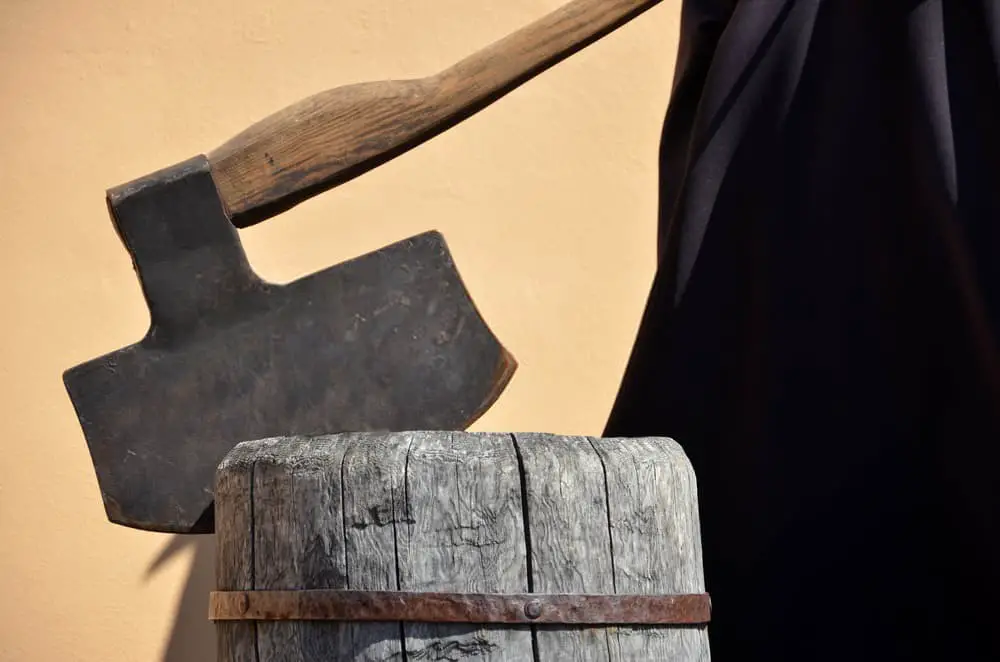
Axe enthusiasts often recognize this type by its distinctive ability to create square pieces from round logs. Its primary purpose is serving furniture makers, who value its efficiency in transforming raw materials into usable lumber. The axe’s design features multiple, flat blades that run parallel to the handle, providing a sturdy foundation for precise control. Additionally, the tool boasts a subtle grip feature, allowing users to maintain a firm grasp and minimize slippage during use.
Mattock
The landscaper’s go-to tool, this versatile axe excels at tackling tough tasks such as breaking through dense topsoil, severing thick roots, and even taking down small shrubs. Its unique design features a double-sided axe head with both pick and flat blade configurations on each side, making it an indispensable companion for gardening enthusiasts.
Miner’s Axe
The axe’s design bears resemblance to its Dayton counterpart, sharing a similar pattern and color scheme on the head. However, this particular model features a shorter handle, making it a versatile tool for tasks that require precision and maneuverability. Its name is rooted in its historical use among miners extracting copper ore and other minerals, but its utility extends far beyond industrial settings.
Having one at home can prove invaluable for tackling projects within confined spaces or requiring precise control.
Shingling hatchet
For roofing professionals, this particular axe stands out as the go-to tool for the job. Its distinctive hatchet-style head features a strategically placed notch, making it perfectly suited for removing nails from rooftops. With its compact handle and shock-absorbing grip, this axe is designed to provide hours of comfortable use without fatigue. Its unique design makes it an indispensable asset for any roofer looking to tackle even the toughest roofing projects.
Splitting Maul
The axe at hand is a robust one, featuring a substantial wedge-shaped head with sharp edges on either end and a blunt edge opposite them. Its primary application lies in splitting wood along the grain direction. When wielding this tool, it’s essential to exercise restraint when employing side swings, as its considerable heft can compromise your balance.
Types of Axes for Survival
These axes, categorized as such, are purposefully designed for rescue and general outdoor survival. While their primary function is rooted in these applications, their versatility extends to other uses beyond.
Crash Axe
The hatchet-style rescue axe is an essential tool for pilots involved in life-saving missions following an air crash. Its unique design enables it to effortlessly cut through various obstacles, including walls and windows, allowing emergency responders to rapidly access victims. Weighing very little, this durable instrument is crafted from strong steel or titanium, ensuring a long lifespan despite its lightweight nature.
Forest Axe
The forestry axe boasts a robust head crafted from solid carbon steel, its weightiness making it essential to use with restraint when swinging. This tool’s primary purpose, as its name suggests, is geared towards tackling demanding tasks such as felling thick tree branches, clearing fallen trees, and splitting heavy-duty wood.
Hudson Bay Axe
The axe’s origins may seem counterintuitive given its name, as it actually originated in Spain and southern France. However, the New World program brought significant changes, introducing this trade product to Native Americans living along the Hudson Bay, which led to the naming of the region. This tool became deeply ingrained in Native American culture, primarily utilized for chopping and light splitting purposes.
Its defining characteristics include a heavy, forged head, a steel wedge, and a wooden handle.
Tactical Axe
In contrast to the more substantial axes featured on this list, this particular type is characterized by its agility and portability. Designed for basic tactical training, these lightweight and compact axes draw inspiration from traditional tomahawks. They can be fashioned with a double-bit design featuring a sharp blade in either a sickle, pick, or hammerhead form, accompanied by a stable grip that provides a secure hold.
Types of Axes for War
In the annals of warfare, axes have played a significant role as trusted tools of close-quarters combat. Their design has been carefully crafted to prioritize portability and maneuverability, making them ideal for swift and decisive strikes on the battlefield. While many axes share these fundamental characteristics, some exceptional models stand out due to their innovative features and designs, which aim to enhance their effectiveness in the heat of battle.
Axe Pistol
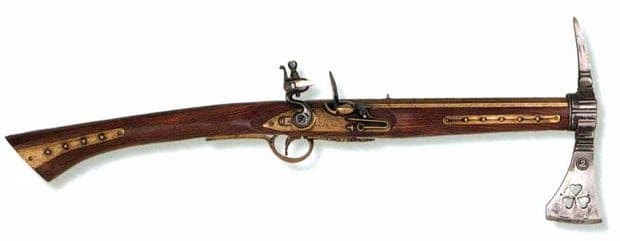
The wartime charm of this unusual item is undeniable, with its unique combination of an axe and a pistol that would have been unimaginable in peacetime. While it’s more accurately described as a pistol than an axe, its versatility makes it a fascinating relic. According to historians, the Germans designed this multi-tool for close combat during World War II.
The durable zinc cast metal blade and body are paired with a sturdy European hardwood handle, making it a prized possession for collectors of unusual war artifacts.
Bardiche

In medieval Europe, one tool stood out as the most ubiquitous close combat instrument: the falchion. Prior to its adoption as a weapon of war, it was primarily employed by butchers in their daily tasks – namely, cleaving oxen’s heads. The falchion is easily distinguishable due to its curved blade, which extends down to the lower end of the handle, providing a formidable and versatile tool for both combat and culinary purposes.
Battle Axe

Developed for close combat battles, these handheld weapons come in a variety of shapes and sizes, typically compact enough to be thrown with one hand. However, their versatility also allows them to be gripped firmly with two hands to generate more force when needed. The blade can take on different forms, including single-edged, double-bit, or curved designs.
Dagger Axe
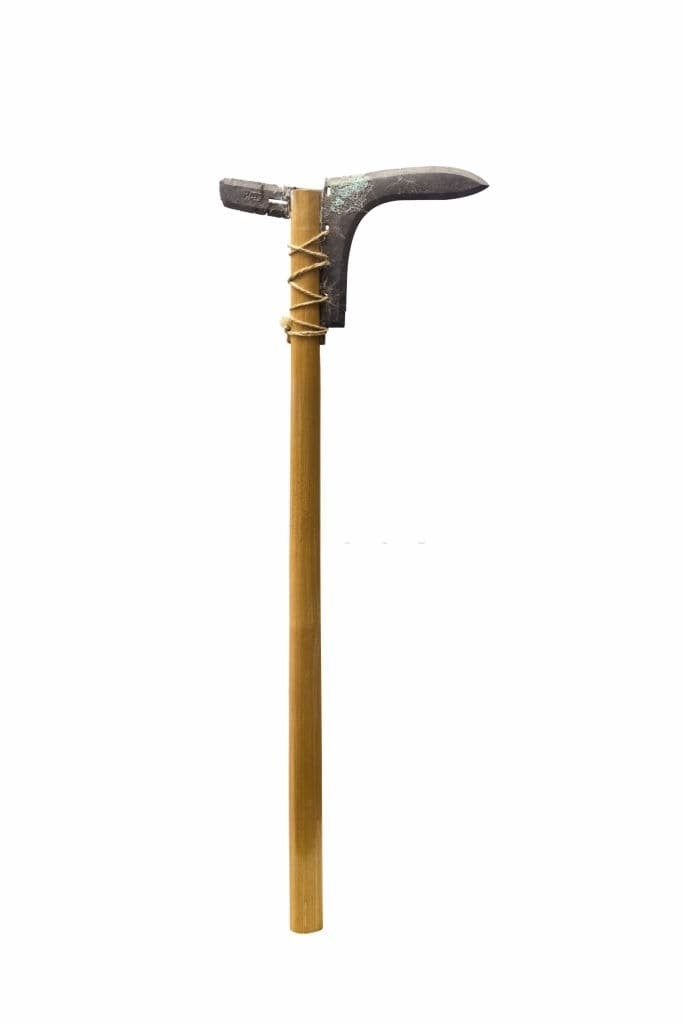
The Jian, a type of ancient Chinese sword, has a long history dating back centuries before the construction of the Great Wall. Its distinctive feature is the perpendicular mounting of its dagger-shaped blade to the handle, setting it apart from other similar weapons.
Halberd

Dating back to the 15th and 16th centuries, these medieval headgear pieces hold a significant place in history. The spiked head is perhaps the most well-known design, often linked to frontline combatants who wore them during battles. What’s fascinating is that they can be customized to feature unique designs or even replicate the coat of arms of the kingdom being fought for, making them a testament to the soldiers’ allegiance and identity during wartime.
Throwing Axe or Tomahawk
In Canada and the United States, the tomahawk has gained popularity as a staple in axe-throwing sports. These competitive activities are governed by various international organizations, which have established rules and regulations to ensure player safety and fair play. When it comes to axe throwing, the tomahawk is prized for its compact size, lightweight design, and balanced features – making it an ideal choice for enthusiasts who value ease of use and precision.
Unlike other types of axes, however, the tomahawk is not typically used for splitting wood, instead serving as a specialized tool for recreational and competitive axe-throwing purposes.
Viking Axe

The Viking-era war axe is a well-known relic from the medieval period. While still viable for casual axe-throwing games, its functionality has largely been replaced by decorative purposes. Its distinctive features include a pointed head and a sturdy wooden handle. While not entirely impractical, it can be used for minor splitting tasks, making it a nostalgic yet functional piece from a bygone era.
Other types of axes
While the initial list provides a solid foundation, it’s just the tip of the iceberg. In reality, there are numerous special axes that can be found in various contexts, such as films, outdoor pursuits like landscaping and hiking, and possibly even other areas where precision and control are crucial.
Executioner’s Axe
In the medieval era, this formidable instrument played a pivotal role as a symbol of power and authority. Specifically, it was wielded by the designated executioner of a kingdom, tasked with carrying out the beheading of criminals, usurpers, and enemies who threatened the realm’s stability.
Its primary purpose was twofold: to instill fear in those contemplating criminal acts, serving as a deterrent to prevent crimes from being committed, while also showcasing the ruler’s unyielding resolve to maintain order and justice.
Ice Axe
Among mountaineers, this versatile tool stands out for its utility in navigating snowy terrain. Its sturdy design allows it to traverse thick snows with ease, and the stainless-steel head can even be used as a makeshift walking stick when held at the center. While its lightweight construction makes it easy to maneuver, it’s worth noting that this axe does come with a premium price tag.
Pick Head Axe
The distinguishing characteristic of this type of axe is its T-shaped head. Depending on the material, the handle can be constructed from wood or fiberglass, with a double metal head. More contemporary pick heads have evolved to feature pointed tips and chiseled sides that are slightly curved. This particular design is often employed in landscaping and gardening due to its ability to effectively break through hard soils, concrete, and rocky surfaces.
Shepherd’s Axe
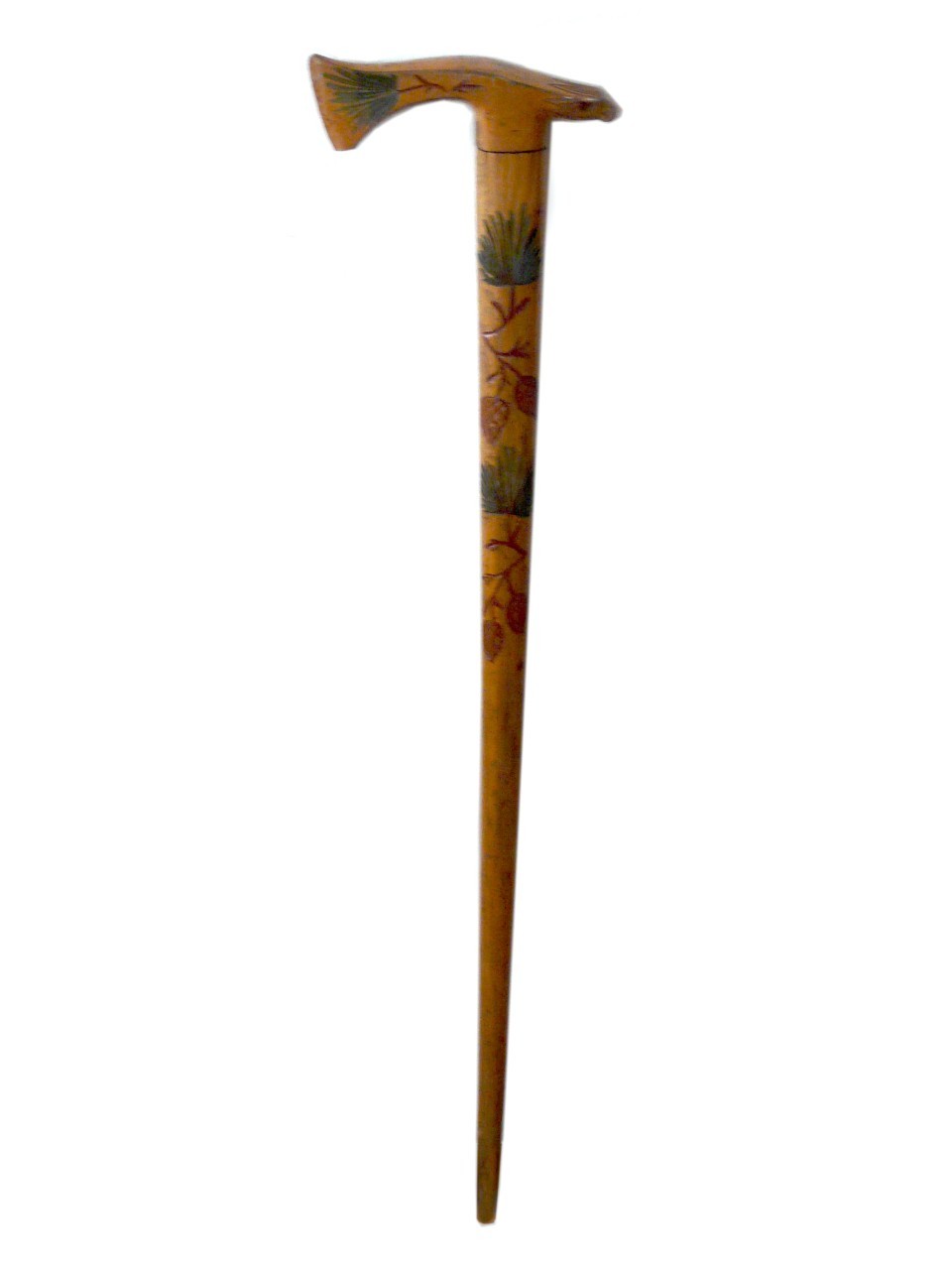
Today, this antique piece is often repurposed as a decorative item, boasting a beautifully crafted forged head typically made from silver or gold. Its rich history extends beyond its original function as a walking stick in rural areas, with evidence of it being used in traditional Native American dances. The blade itself is double-edged, featuring a sharp side and a flat counterpart perfect for hammering purposes. Completing the design are a long shaft and a sturdy metal butt.
FAQs
Beyond our comprehensive overview, it’s crucial to delve into the realm of axe typology, where a plethora of questions await answers. In this segment, we’ll address the most pressing inquiries related to the various types of axes, providing insight and clarity for those seeking to deepen their understanding.
Why are axe blades curved?
When it comes to splitting hardwood, curved blades prove to be a superior choice over their flat counterparts. This design variation enables them to outperform flat blades, yielding better results. Moreover, curved blades are particularly effective when working with biting objects, as they reduce the likelihood of getting stuck in wood. This added functionality makes them a recommended option for tackling tough woodworking tasks.
How are axe heads made?
Axes have been crafted using ancient techniques reminiscent of the stone age, where weapons were forged from solid steel. The process begins with melting the metal, followed by shaping it into a design that suits one’s preference. Next, the blade is sharpened to suit its intended purpose or cutting task. Finally, the axe head is mounted onto the handle, either in parallel alignment or perpendicular orientation.
Is an axe considered a weapon?
The concept of specialized axes for combat has a rich history, dating back to medieval times. As warfare evolved, these tools adapted to serve dual purposes. Among the most well-known examples are the halberd and the tomahawk, both of which played significant roles in battles throughout history.
Can we buy axes that are custom made?
When it comes to selecting the perfect axe head, you’re spoiled for choice. With a diverse range of patterns, shapes, and sizes available, you’re sure to find one that fits your unique needs. For those looking for a truly customized option, some specialty stores even offer re-forging services, allowing them to transform old axes into stunning decorative pieces.
Additionally, many axe enthusiasts opt for personalization, using engravings on the blade or handle to add meaningful symbols and statements.
What are the best axes?
When it comes to axes, the best ones often go beyond traditional workhorses. Specialty and sport axes are also among the top-rated in the market today. If you’re curious about the cream of the crop, consider checking out these standout options: Fiskars’ chopping axe stands out for its precision, Tabor’s chopping hatchet impresses with its power, while Iunio’s camping axe excels at versatility.
Estwing’s double-bit axe is a favorite among woodworkers, Off Grid’s all-purpose survival axe is perfect for outdoor enthusiasts, and SOG’s throwing hawk is a must-have for any adventurer. Meanwhile, Gerber’s Bear Grylls survival hatchet offers rugged reliability, Husqvarna’s multipurpose axe excels at adaptability, and Hults Bruk Kalix felling axe is a force to be reckoned with in the world of forestry.
Are old axes worth anything?
The allure of antique axes has been sparking a surge in black market transactions. Notably, Black Raven axes have become highly sought after, commanding a minimum price tag of $500. The demand for these vintage tools is also fueling activity in local markets, where collectors and enthusiasts are eager to acquire well-preserved examples. With some TLC and expert forging, these old axes can be restored to their former glory, making them virtually indistinguishable from new ones.
Why are black raven axes so expensive?
In the realm of the black market, the Black Raven Axe is renowned as a gold standard, and its prestige is well-deserved. These small hatchets feature a striking circular design etched with a majestic raven motif, setting them apart from other axes. As vintage collectibles, only over a thousand Black Raven Axes are available, making them highly sought after by enthusiasts.
The price of these coveted tools depends on the condition in which they’re sold, but pristine examples typically start at around $1000 when auctioned off.
Are there still stone axes?
Throughout the Stone Age, stone axes served as the precursor to the adze axe. Interestingly, these primitive tools remain an integral part of the cultural heritage of nomadic tribes worldwide. They play a vital role in various aspects of their daily lives, including foraging, processing hunted meat or game, and splitting wood. Additionally, they have been used as weapons for hunting and self-defense.
Buying guide
When it comes to utilizing an axe beyond just chopping, it’s essential to consider its overall functionality. The tool’s performance is directly tied to its features, blade quality, and handle design. To ensure you’re getting the best axe for your outdoor needs, here are some key factors to keep in mind.
Type of Axe
When selecting an axe, consider the primary purpose you intend to use it for. Will you be relying on it for chopping wood or tackling various woodworking projects? In this case, focus on finding an axe specifically designed for that type of work. Alternatively, if your needs extend to outdoor activities like skiing, mountaineering, or landscaping, a survival-style axe would be a good fit.
And if you’re looking to add a touch of decorative flair, options like war axes and others might be more suitable.
Type of Blade
Before purchasing an axe, it’s crucial to understand the different types of blades and their corresponding features. Familiarize yourself with the functions and capabilities of each side, as well as any distinctive characteristics that may impact its use. For first-time buyers, seeking guidance from a knowledgeable seller or bringing someone familiar with axes can prove invaluable in avoiding potential mishaps when handling the tool.
Head Weight
When selecting an axe, the head weight plays a crucial role in determining your wielding power. To ensure optimal performance, consider factors such as your height, body type, and the specific activity for which the axe will be used. If you’re unsure about the type of axe to purchase, conduct thorough research or browse online reviews and customer comments. You can also reach out directly to the seller through private messaging to gather valuable insights.
Handle Length
When selecting an axe, it’s crucial to think about who will be using the tool, as their physical characteristics will impact its effectiveness. Balance and strength are key considerations when wielding an axe, with the length of the handle playing a significant role. A longer handle requires more physical exertion, while a shorter one demands greater precision.
Additionally, the orientation of the handle relative to the blade – whether parallel, perpendicular, or even curved – affects how you grip and control the tool. It’s essential to consider these factors when choosing an axe handle length, as they will ultimately influence your overall experience.
Axe Handle Materials
When it comes to maintaining your tools, understanding the material composition of their components is crucial. Axe handles, in particular, have evolved significantly over time. Traditional wooden handles remain a popular choice, offering a natural grip and durability. However, modern designs have introduced innovative materials like fiberglass, high-grade plastic, and even steel, each engineered to optimize performance for specific tasks.
Price
When selecting an axe, it’s crucial to consider the purpose it will serve and the type of user it’s intended for. The price range can vary greatly depending on the material used for the handle and the design of the blade. A good starting point is to set a budget around $200, which is a reasonable minimum for most axes. However, prices can fluctuate significantly based on factors such as whether the axe is a single-bit or double-bit model, its intended use (e. g.
, sports or vintage), and the materials used in its construction. It’s essential to research and compare options to find an axe that meets your specific needs and budget.
Axe care
To ensure your axe remains functional for a long time, regular maintenance is crucial. Fortunately, taking care of your axe is an effortless task that requires minimal effort. Here’s how to do it: Firstly, after each use, make sure to thoroughly clean the head of the axe, removing any sap or dirt that may have accumulated. This can be done using steel wool and acetone. Next, wipe down the handle with a cloth to remove any dirt or debris.
If your handle is particularly dry or cracked, consider applying linseed oil twice a year to keep it in good condition. Additionally, if the blade is not excessively dirty after use, you can give it a quick clean using steel wool or turpentine. Finally, store your axe in a dry and well-ventilated container or storage unit to prevent damage from moisture.
Conclusion
Axes remain an indispensable tool in various industries even today, offering a range of benefits beyond mere chopping. From landscaping to wood carving, furniture making, and more, their versatility is unparalleled. The right axe for the job depends on your specific requirements. However, it’s crucial to ensure they are properly maintained and stored to optimize their functionality and extend their lifespan.
Related Posts
When it comes to farming, having the right equipment can make all the difference in achieving optimal results. However, with numerous options available in the market, selecting the best farm equipment can be a daunting task. In this comprehensive guide, we will take you through the key considerations to keep in mind when buying farm equipment, from riding mowers to tillers and more.
Whether you’re looking to upgrade your current fleet or start from scratch, this guide aims to equip you with the knowledge necessary to make an informed decision. We’ll also be reviewing some of the top products on the market, providing valuable insights into their features, pros, and cons.






